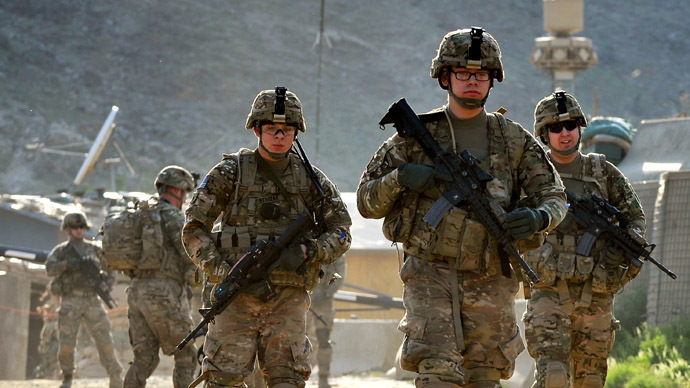It took six months of jockeying, but the Afghan government and Taliban negotiators are finally making preparations for direct peace negotiations. Afghan President Ashraf Ghani’s decision to call a Loya Jirga on the contentious issue of prisoner releases appears to have paid off. On Aug. 8, the grand assembly approved Kabul’s request to release the final 400 Taliban prisoners from its custody. The result paved the way for formal talks between the two sides.
The intra-Afghan negotiations represent the first time since the conflict began that Afghans will sit down and discuss their considerable differences together. But it’s also an opportune time for Washington to do what it should have done years ago: extricate the U.S. military from the war.
Approximately 8,000 U.S. troops remain in Afghanistan — nearly 19 years after U.S. military operations against al Qaeda and the Taliban commenced. The American people have been asking themselves the same question throughout that long period: when will Americans in uniform finally pull out of a conflict that has lost its purpose?
According to a March 2020 Economist/YouGov poll, 44 percent of Americans surveyed believe sending U.S. troops into Afghanistan was a mistake. An April 2020 poll commissioned by the Concerned Veterans of America found 73 percent of veterans and 69 percent of military households support the withdrawal of U.S. troops from Afghanistan — a 13-percentage point increase compared to the year prior. The Charles Koch Foundation has found that nearly three-quarters of Americans support bringing U.S. troops home from both Iraq and Afghanistan. If the American people had their way, the U.S. military would have been out of Afghanistan years ago.
U.S. policymakers would be making a mistake if they discounted these figures. The American people are entirely justified in heaping skepticism on Washington’s policy in Afghanistan. The U.S mission, after all, long ago transformed into a collection of expensive, tedious, impractical tasks totally beyond the U.S. military’s capacity to achieve.
The original U.S. national security objective in Afghanistan was both simple and defensible: to eliminate al Qaeda’s terrorist infrastructure and punish the Taliban for harboring the group. This objective was accomplished with remarkable speed during the early months of the campaign. By the winter of 2002, the job was essentially over. Al Qaeda’s training camps were wiped out, and thousands of the network’s fighters were killed. Al Qaeda chief Osama Bin Laden was running for his life. And members of the Taliban, a movement that once controlled 90 percent of Afghanistan, were in hiding or begging to become part of the new order.
Rather than declaring victory, however, Washington made a huge mistake—it changed the mission to counterinsurgency and nation-building. U.S. officials deliberately put themselves in the position of constructing a brand new state from scratch. Since 2002, the U.S. has appropriated more than $86 billion on the development of the Afghan national security forces, a force plagued by systemic corruption to this day — meritless promotions of senior commanders, the pocketing of salaries, the re-selling of weapons and fuel for profit on the black-market and lax vetting of army recruits who then go on to attack U.S. soldiers.
Courtesy of the U.S. taxpayer, nearly $36 billion has been devoted to Afghanistan’s governance and development since the war began. The government in Kabul, however, can best be described as inept and dysfunctional, with senior Afghan politicians often more interested in fighting each other for power and prestige than they are in fighting for their constituents. Despite constant warnings from U.S. officials about the need for Afghanistan’s governing class to take anti-corruption initiatives seriously, the country ranks 173rd out of 180 countries on Transparency International’s corruption perceptions index.
Nor have U.S.-funded counternarcotics programs been particularly successful. Afghanistan continues to hold the title of the world’s largest producer of opium. The Taliban, ready to exploit every opportunity, has made it a practice of taxing the production of opium to rake in much-needed resources to fund operations against the Afghan government.
This should be a wake-up call to U.S. officials, past, present, and future: think long and hard before you allow yourself to be tempted by hubris. The result could very well be a multi-decade, $2 trillion disappointment that ties down U.S. resources and distracts Washington from higher priorities.
This past February, the United States, and the Taliban signed an agreement that not only begins drawing down U.S. troop levels but provides Afghan stakeholders with an opening to sit down and discuss their nation’s future. U.S. Secretary of State Mike Pompeo spoke with Taliban deputy chief Mullah Abdul Ghani Baradar via video chat on Aug. 3, where he encouraged the Taliban to begin intra-Afghan negotiations as soon as possible.
The conclusion of a peace deal in Afghanistan, however, will take years — assuming a deal is ever signed. Once the process begins, Kabul and the Taliban will engage in contentious diplomacy on some of the same controversial topics — the role of Islam in Afghan society; revisions to the Afghan constitution; the composition of an interim national unity government; how to incorporate Taliban fighters into the Afghan security forces.
None of these conversations will be easy. Yet all of them are necessary if the Afghan people are to see a chance of peace in their lifetimes.
The U.S. military has done everything it has been asked to do by Washington. But they shouldn’t be asked to stay in a holding pattern until tranquility blossoms throughout Afghanistan. It is time for a U.S. troop withdrawal and Afghans to determine their future.
Daniel R. DePetris is a fellow at Defense Priorities, an organization that informs citizens, thought leaders, and policymakers about the importance of a robust and dynamic military.













